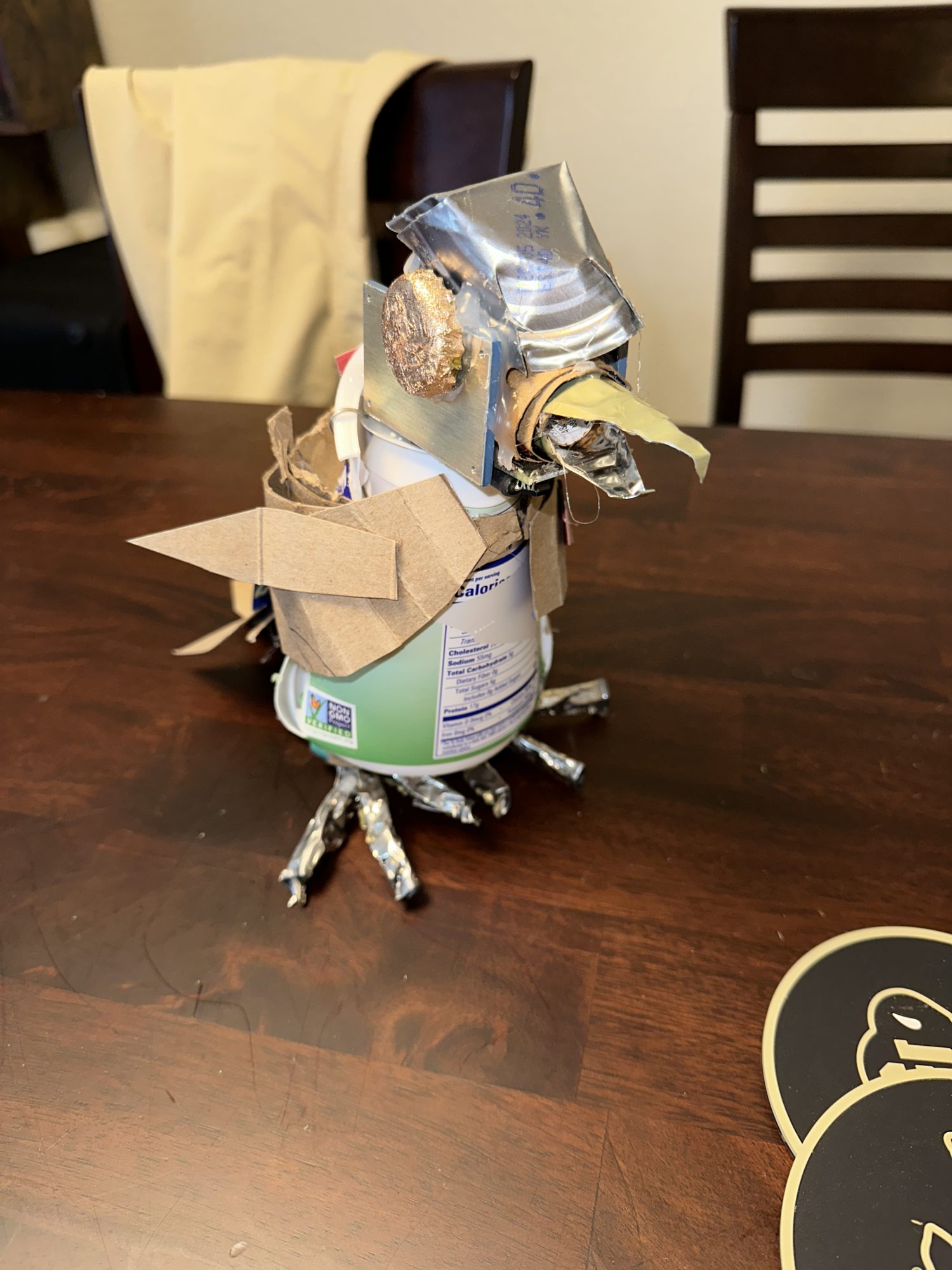As I talked about in my last post, for my artifact, I chose to create a bird from a variety of recycled materials. This idea was inspired by several different artists who have done similar things using scrap metal and other materials.
I began my project by researching and sketching different kinds of birds and looking at specific features of them that I wanted to copy. One of the things I wanted to do with my project was experiment with the different textures of the materials I had and how I could relate them to parts of the birds.
After getting a general idea of some things I wanted to include on my bird, I started building with my only plan being to create something that looks like a bird. I started my construction from the bottom up, making the feet first. I wanted to emulate the ribbed/wrinkled look of the skin on a birds legs so to do this I used a cut up soup can. My plan was to cut the can and then roll it up tightly, however when I began rolling the metal it crumpled. I was still able to achieve the look of a birds talons, most similar to the sparrow seen in the drawing above. For the rear part of the foot I used a screw and a rubber cap.

After the feet were completed, I started on the body which I made from an empty yogurt container. I cut the yogurt container and used a wire to hold it in a shape that was wider at the bottom and narrowed as it went up towards the head of the bird. Once I was happy with this shape I started on the wings which were one of the more challenging parts of this project. Because a birds wings mold to it’s body, I wanted my wings to do the same. To achieve this, I rolled up my cardboard before attaching it as the wings, then doing several layers of this to look like feathers.

My next step was making the head of the bird. This was probably my favorite part of this project, as I got to use several different materials with a lot of textures.

The pictures above show the head from every angle. I wanted to incorporate some of the recycled computer parts I found to really emphasize the artificial part of this project. Almost the whole head is made from recycled computer parts. These parts were hard to work with and not very malleable forcing me to work around their shapes. Once the shape of the head was made, I made the beak from left over pieces of the can that I bent into the shape of the beak and then bottle caps as the eyes.
There were parts of this process where I thought that this wouldn’t end up looking anything like a bird but as I got towards the final product, it became clearly identifiable as a bird and I’m very happy with how it turned out.


2 Comments. Leave new
Wow, what a wonderful undertaking this is! I am extremely impressed with your inventiveness and creativity for using used materials to build something as intricate as a bird. It’s also impressive how carefully you studied the many characteristics of birds and incorporated them into your project. Working with the many textures and shapes of the materials must have been difficult, but the outcome is simply wonderful. It’s impressive to see how you overcame any challenges to produce something that is simultaneously artificial and natural. Continue your excellent work!
Hi Jonah, it looks like we picked very similar project ideas. With your aesthetic encompassing a variety of possible materials and items, did you find that you were picking objects based on their resemblance to bird parts? Or were you picking parts that you wanted to include and during your construction process you found a way to incorporate them in the final shape? You mention texture, which I think you did a great job with, especially with the feet. I think it was an interesting design decision to have the cardboard brand labels face downwards instead of face up, why did you choose this? Overall I think you did a great job with assembling these items. It is very clearly the subject you were going for and that is always a success when doing realism-adjacent sculptures.